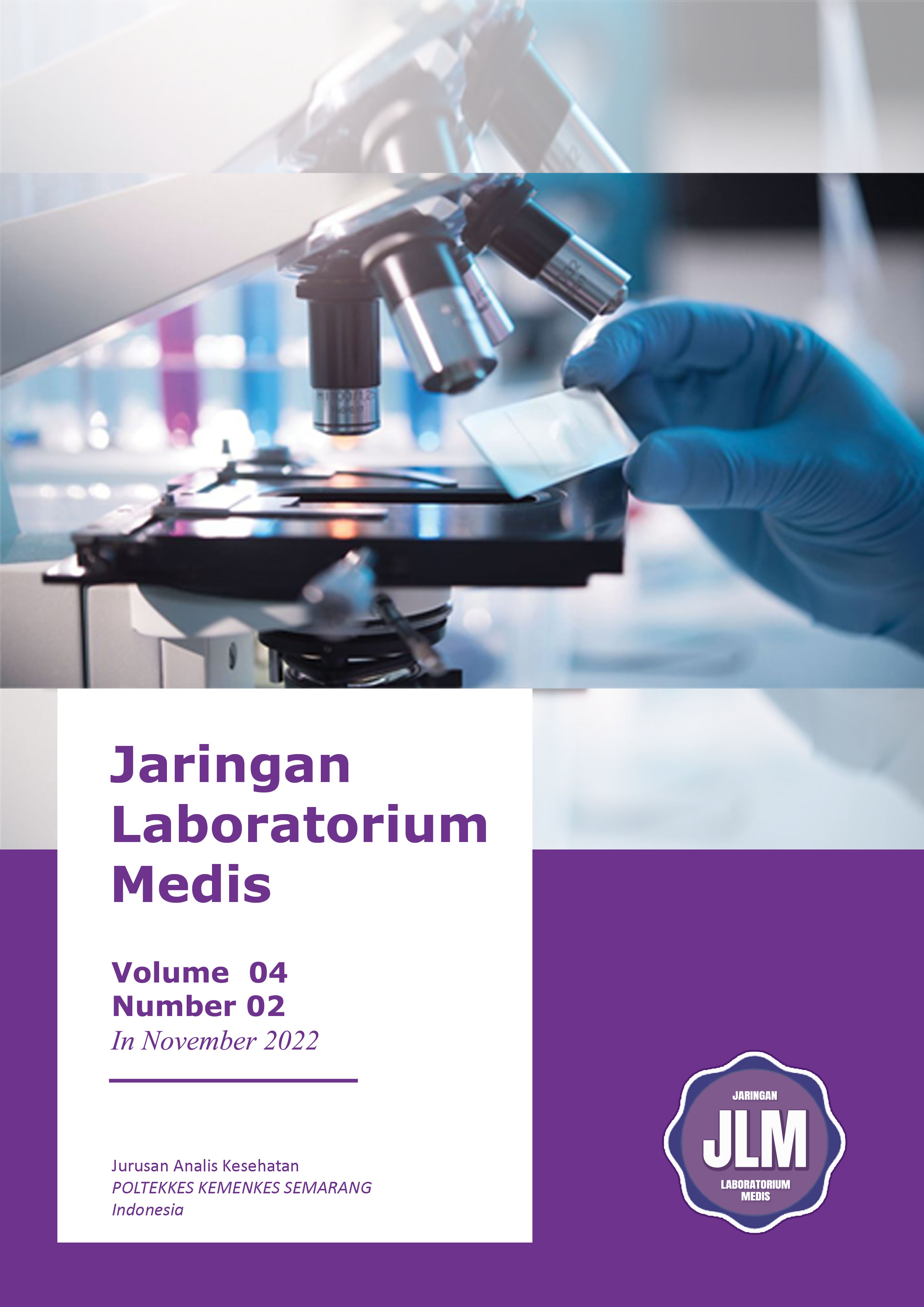Published 2023-12-07
Keywords
- Bacillus Cereus,
- Spores,
- Painting Method
Copyright (c) 2022 Jaringan Laboratorium Medis

This work is licensed under a Creative Commons Attribution-ShareAlike 4.0 International License.
How to Cite
CrossMark
Dimensions
If it doesn't Appear, click here
Impact Factor
Abstract
Endospores are formed by members of several genera of gram-positive bacteria, such as Bacillus and Clostridium. The spores are very resistant structurally; withstand the temperature of boiling water for two hours or more. They contain very little water and show very few chemical reactions. The favorable external environment will cause the spores to break down and the vegetative cells to appear to grow and reproduce. Identification of endospore-forming pathogens is important in food and medical microbiology. However, the spores contain multiple protective layers, which cannot be easily penetrated by simple staining or Gram staining techniques. Therefore, it is necessary to apply heat to help penetrate the color, with various methods of Gram stain, fluorescent spore painting, Schaeffer and Fulton spore painting and Client's spore painting method. The results of the fluorescent painting method have better results but require much more expensive equipment using a fluorescent microscope considering the facilities that must be provided for the Schaeffer and Fulton painting method as an alternative if they do not have these facilities.
Downloads
References
- Driks, A. (1999). Bacillus subtilis spore coat. Microbiology and Molecular Biology Reviews, 63(1), 1-20.
- Ehling-Schulz, M., Lereclus, D., and Koehler, T. M. (2019). The Bacillus cereus group: Bacillus species with pathogenic potential. Microbiology spectrum, 7(3), 7-3.
- Ehling-Schulz, M., Frenzel, E., and Gohar, M. (2015). Food–bacteria interplay: pathometabolism of emetic Bacillus cereus. Frontiers in microbiology, 6, 704.
- Gurung, R., Shrestha, R., Poudyal, N., & Bhattacharya, S. K. (2018). Ziehl Neelsen vs. Auramine staining technique for detection of acid fast bacilli. Journal of BP Koirala Institute of Health Sciences, 1(1), 59-66.
- Oktari, A., Supriatin, Y., Kamal, M., & Syafrullah, H. (2017, February). The bacterial endospore stain on Schaeffer Fulton using variation of methylene blue solution. In Journal of Physics: Conference Series (Vol. 812, No. 1, p. 012066). IOP Publishing.
- Oktari, A., Supriatin, Y., Kamal, M., and Syafrullah, H. (2017). The Bacterial Endospore Stain on Schaeffer Fulton using Variation of Methylene Blue Solution. In Journal of Physics: Conference Series (Vol. 812, No. 1, p. 012066). IOP Publishing.
- Schichnes, D., Nemson, J. A., and Ruzin, S. E. (2006). Fluorescent staining method for bacterial endospores. MICROSCOPE-LONDON THEN CHICAGO-, 54(2), 91.
- Smith, A. C., & Hussey, M. A. (2005). Gram stain protocols. American Society for Microbiology, 1, 14.
- Thairu, Y., Nasir, I. A., and Usman, Y. (2014). Laboratory perspective of gram staining and its significance in investigations of infectious diseases. Sub-Saharan African Journal of Medicine, 1(4), 168.
- Tuipulotu, D. E., Mathur, A., Ngo, C., & Man, S. M. (2021). Bacillus cereus: epidemiology, virulence factors, and host–pathogen interactions. Trends in Microbiology, 29(5), 458-471.


